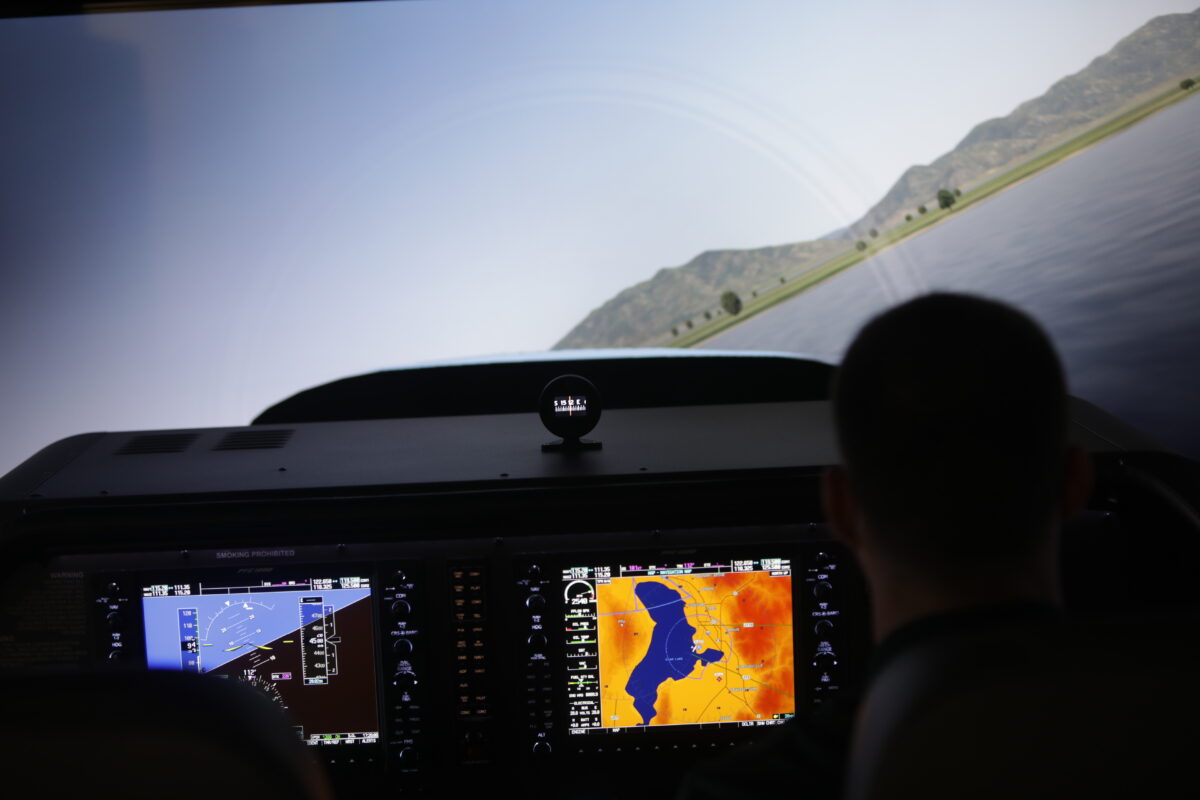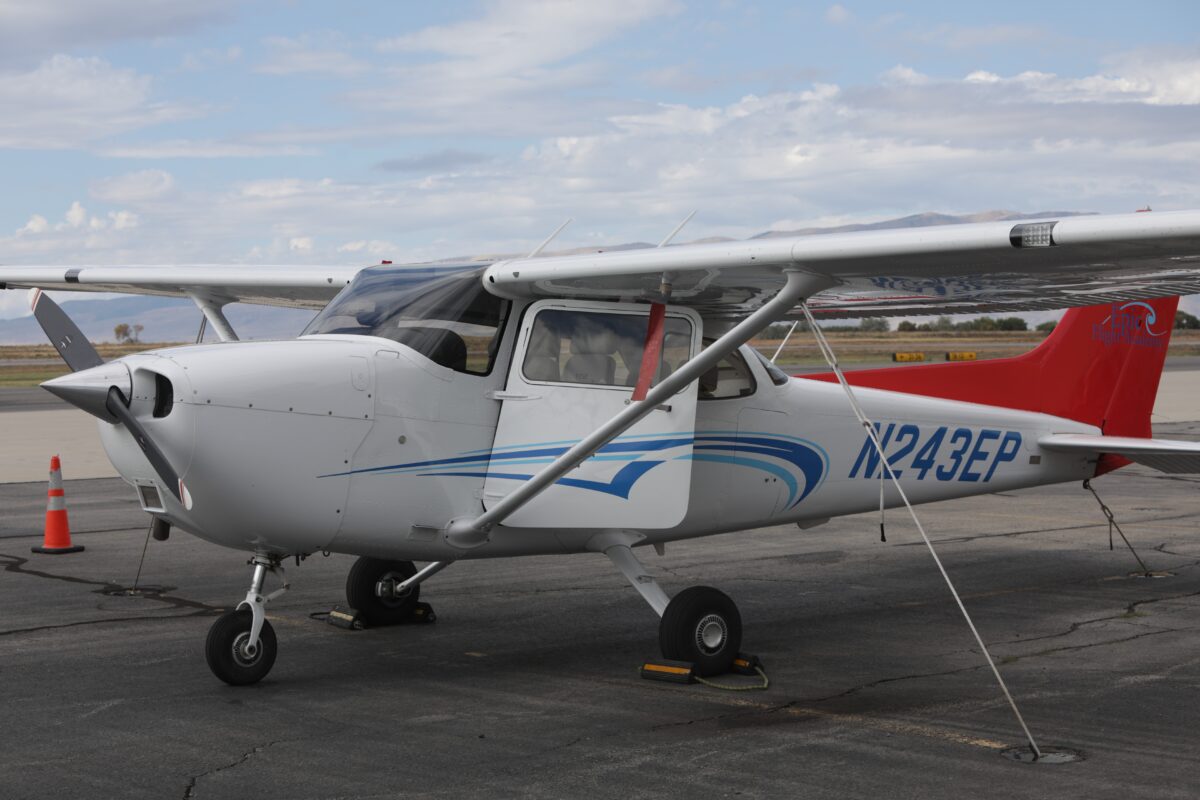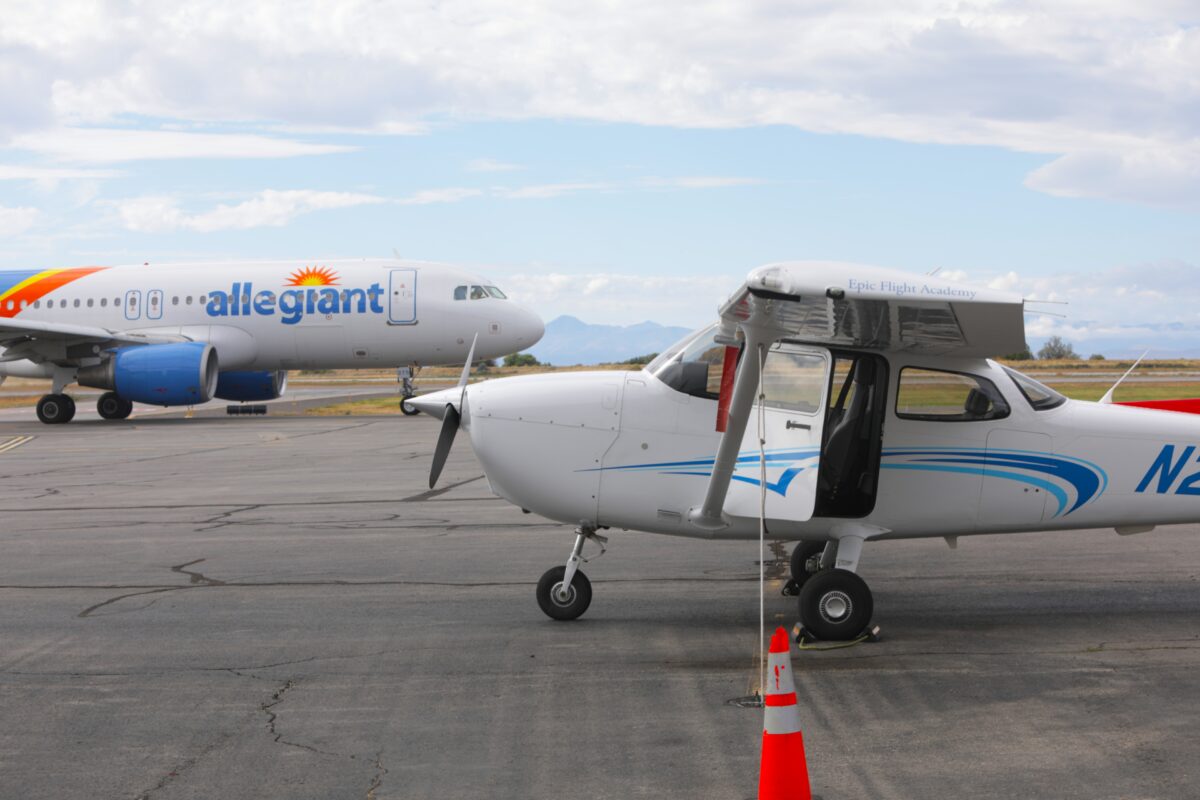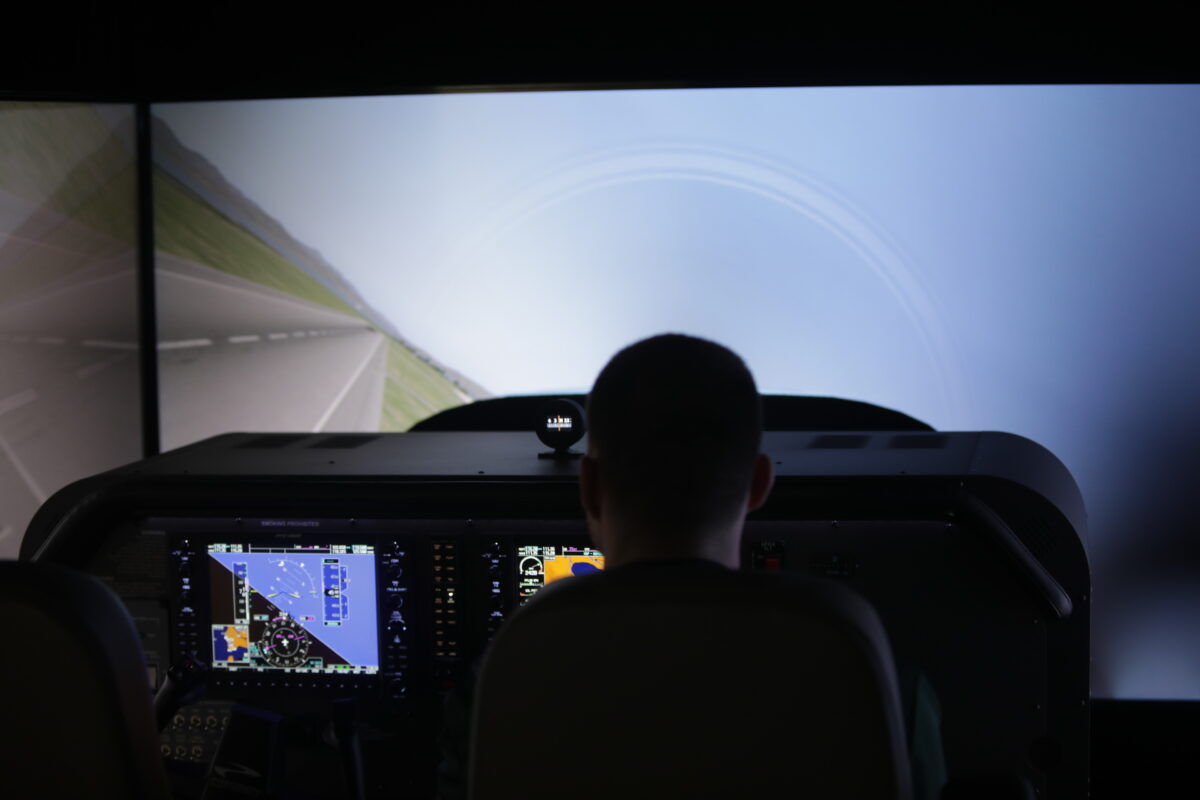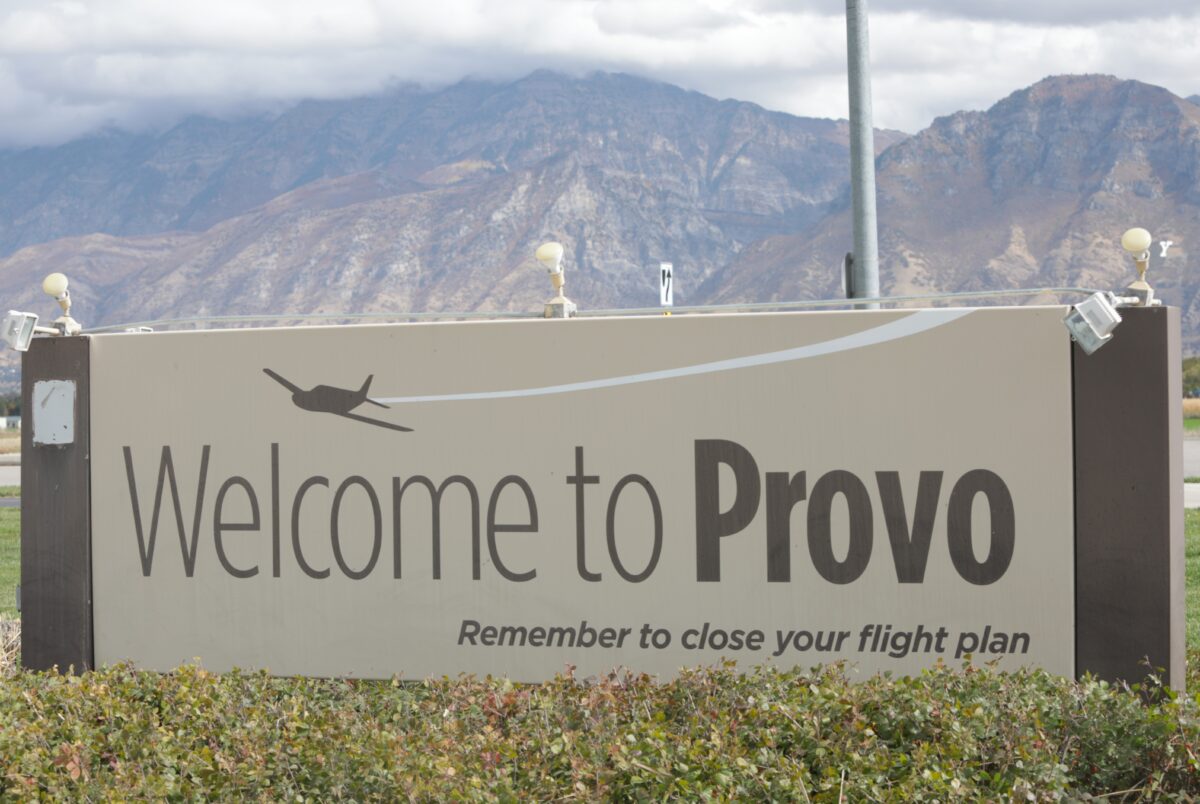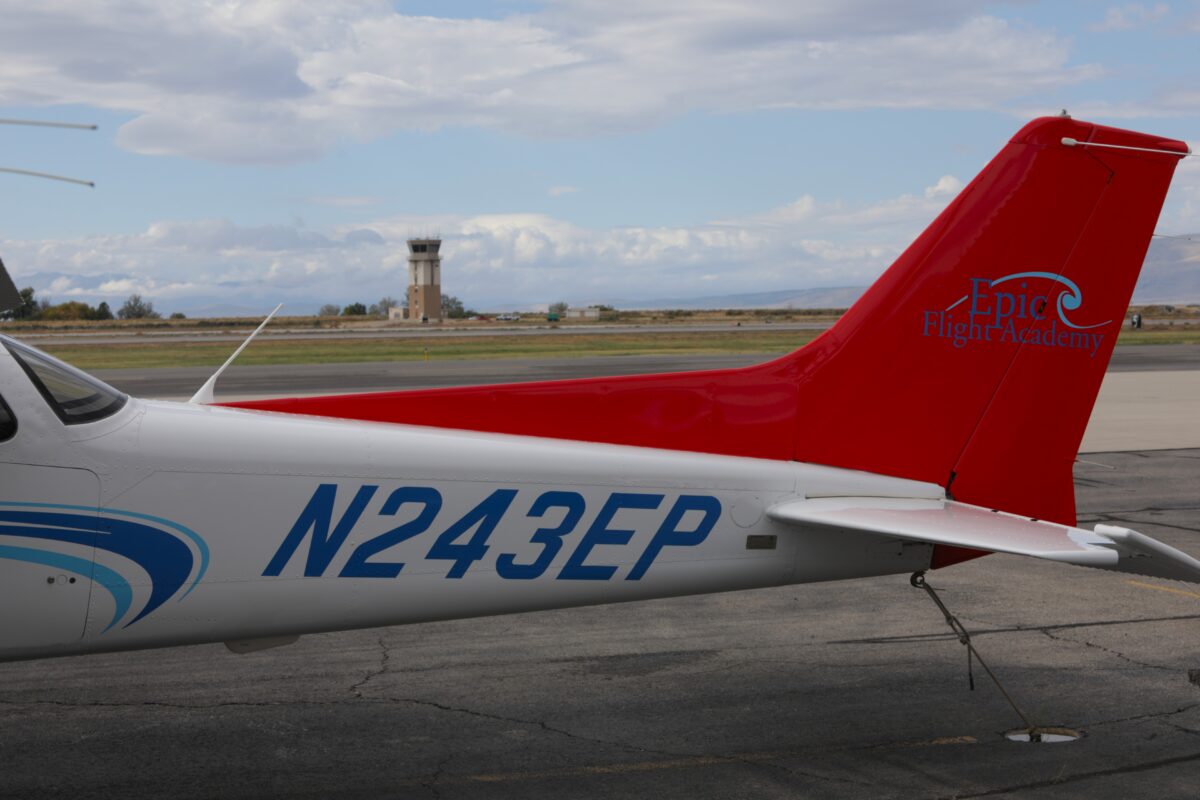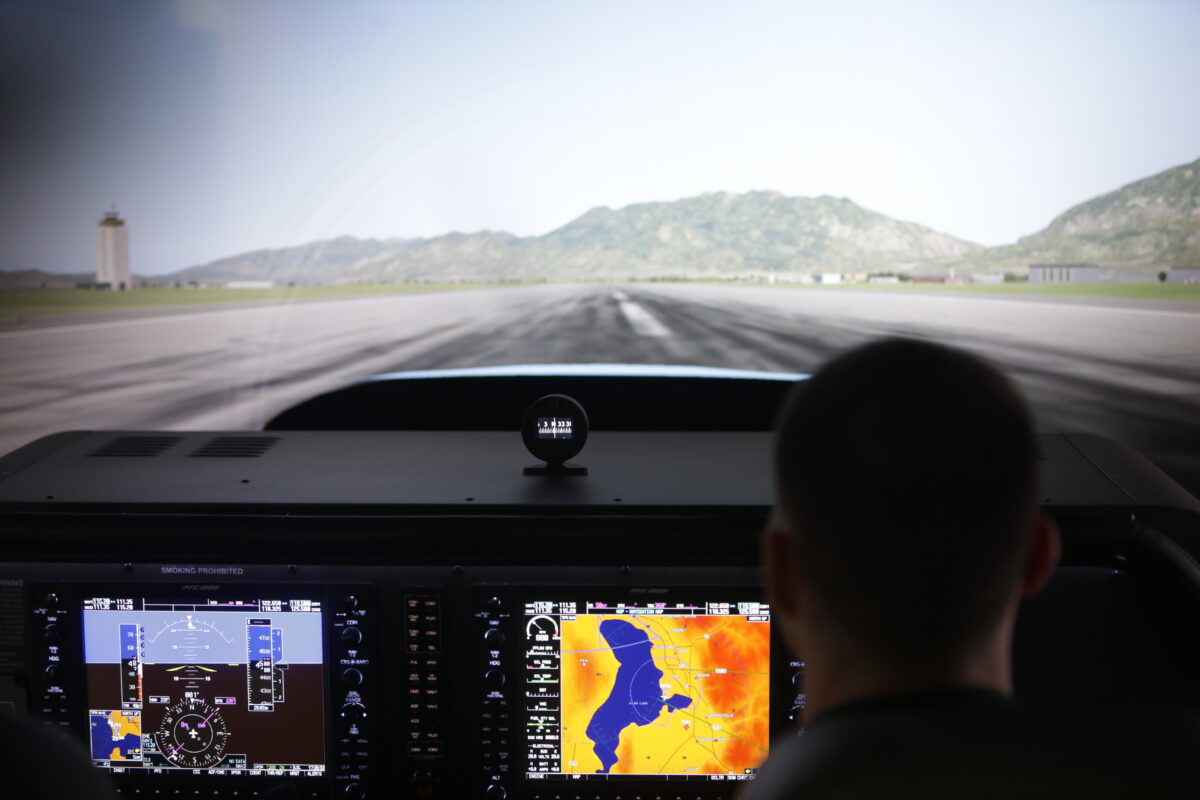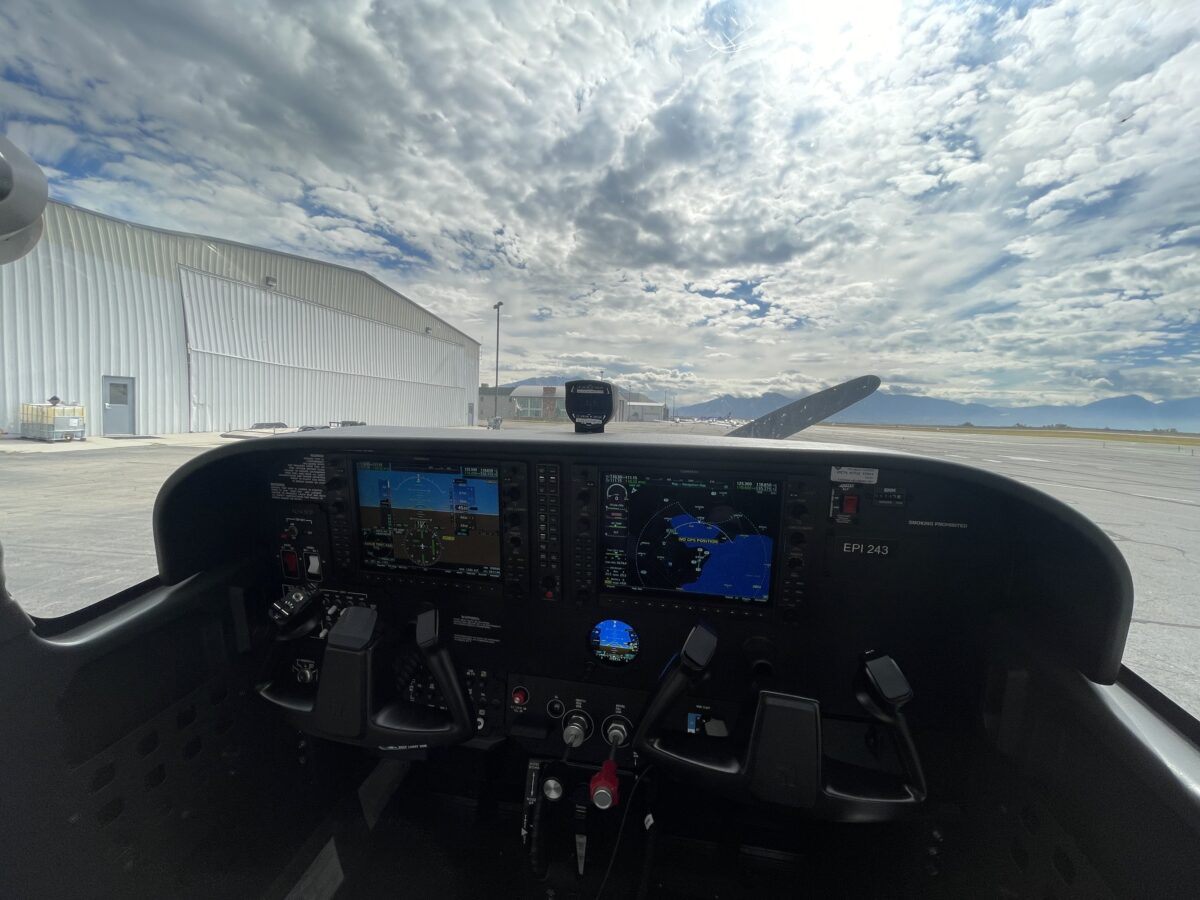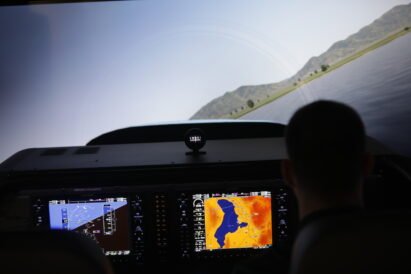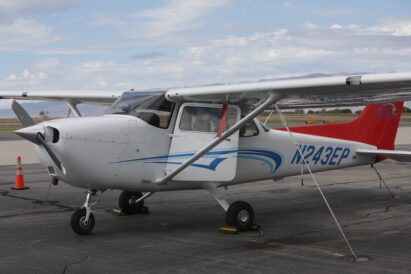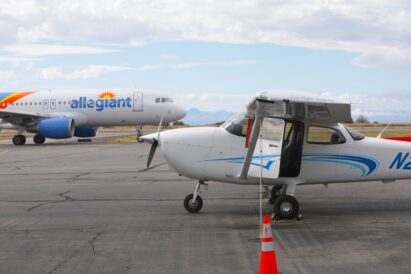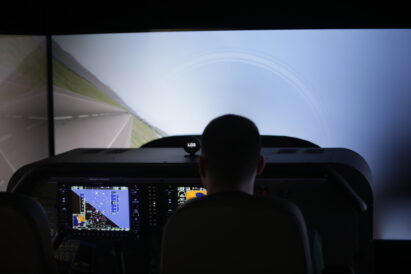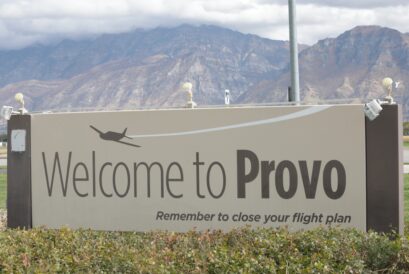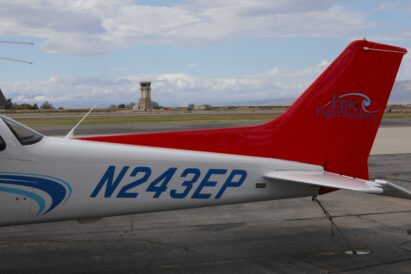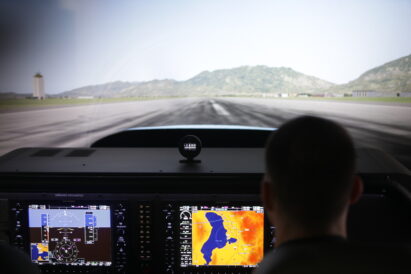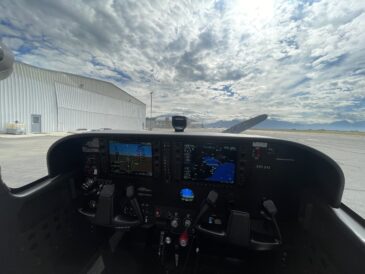Aviation education: Epic Flight Academy aims to teach next generation of pilots at growing Provo Airport
- Brock Rees uses an Epic Flight Academy flight simulator Friday, Oct. 10, 2025, at Provo Airport.
- An Epic Flight Academy aircraft is shown Friday, Oct. 10, 2025, at Provo Airport.
- An Epic Flight Academy aircraft is shown while an Allegiant flight prepares for take off Friday, Oct. 10, 2025, at Provo Airport.
- Brock Rees uses an Epic Flight Academy flight simulator Friday, Oct. 10, 2025, at Provo Airport.
- A Provo Airport sign is shown Friday, Oct. 10, 2025.
- An Epic Flight Academy aircraft is shown Friday, Oct. 10, 2025, at Provo Airport.
- Brock Rees uses an Epic Flight Academy flight simulator Friday, Oct. 10, 2025, at Provo Airport.
- The inside of an Epic Flight Academy aircraft is shown Friday, Oct. 10, 2025, in Provo.
Nearly 104,000 passengers traveled through Provo Airport in July, marking a record month in what is projected to be a record year of travel at the growing regional hub.
The increased traffic is also evident at the airport’s general aviation wing, according to Provo Airport Operations Manager Matt Jensen, who said the total amount of flight operations — the number of times an aircraft takes off or lands — has climbed to nearly 200,000 annually.
“You can ask anybody who flies out of the airport. On the general aviation side, they always tell us that we need to have more hangars, more tie-down spaces, more space in general, to be able to accommodate them,” Jensen said. “And we’re trying to do our best to accommodate that growth in the future.”
The growth was underscored last week by the opening of Epic Flight Academy, a Florida-based aviation school with 10 locations across the country. Epic joins Utah Valley University Aviation, ATP Flight School and Pilot Makers Advanced Flight Academy as aviation institutions using Provo Airport to train the next generation of pilots.
“We’re always excited to have more people come into the Provo Airport,” Jensen said. “We’re very aware of how starved the industry is for pilots. So to be able to even help out more by training more pilots is something that the airport is very excited about being able to do. Epic’s a gigantic company. They’re known all over the country, and we’re just excited to have them join us here.”
Brock Rees, Epic’s director of satellite locations, said the move to Utah Valley corresponded with Epic’s new partnership with Alpine Air Express, an air cargo company based in Provo. The organizations formed a pilot-pathway program to give Epic students an option to pursue the cargo world after graduation.
The Epic program offers Part 141 flight training, an FAA-approved curriculum that takes around 12 months for full-time students to complete, according to Rees, and is designed to get students their FAA certificates quickly.
The training starts in the classroom, where 50 hours of instruction are required, and in the flight simulator, where students learn the complexities of the aircraft prior to taking flight.
Once in the air, students train on new, single-engine planes equipped with Garmin avionics control software and hardware that resembles the equipment of a commercial aircraft, Rees said.
Through scheduled flight plans, students practice maneuvers, instrument procedures and everything else a pilot would need to know.
“A lot of people will finish with 250 hours of flight time, whereas our program is shortened to students finishing under 200 hours of flight time. So it’s even faster. And how we’re able to do that is the program is very structured,” Rees said.
The mixture of commercial, corporate, private and flight school planes at Provo Airport creates a complex airspace where students have to communicate with the air traffic controllers, while the lakeside airport surrounded by mountains also creates a beautiful setting to fly around, according to Rees.
You can get a taste of it on the simulator.
In a dark room with the outside scenery projected onto a screen, the flight simulator resembles the real thing, with identical flight controls to the real airplane.
Pull the throttle until you reach 55 knots, lift the control stick up to nearly 10 degrees and suddenly you’re in the air — a takeoff that feels deceivingly simple.
Using the rudder pedals to turn left or right, you can fly wherever you want on the simulator, and the projected topography will resemble the actual route. Utah Lake looks blue and refreshing, while the Wasatch Mountains appear tall and imposing.
Rees said if you flew to St. George on the simulator, the route would reflect the real-life journey, from takeoff to landing.
The sense of simplicity fades when it’s time to land. As you turn for the runway, you lower the flaps to slow down and gradually bring the nose down. But the lower in altitude you get, the harder it is to fly in a straight line.
“It’s kind of like when you’re riding a bike slowly, you get all wobbly,” Rees said.
Once you straighten out and are ready to land, you pull back on the control stick to ensure the main wheels set down first. Then, you’re on the ground.
It’s a process done in real life at Provo Airport hundreds of times a day by pilots shipping passengers or cargo and by many who are learning to fly.
There are no students at Epic’s Provo location yet, though Rees said some are working through the enrollment process. Epic’s goal is to get 25 to 30 students and prepare them to enter the workforce that will soon be in great demand for pilots.
“This industry is very cyclical,” Rees said. “There’s a lot of need, and then there’s not so much need. And we’re kind of in this in-between area right now, but the retirements forecasted over the next several years are pretty significant, and I think we’ll continue to see a shortage of qualified pilots, which is where we come in to provide that. We provide the structured pathway and then the ability to help students get jobs after they finish.”
Rees said Epic has felt welcomed in Provo and is excited to promote aviation in the community.
As the airport gets increasingly busy, its team is proud to provide a space for flight schools to contribute to the industry, from a multidecade partnership with UVU Aviation to Epic’s arrival.
“Being able to have training aircraft and training facilities at the airport has been instrumental in helping the airport grow to what it is today,” Jensen said. “We’re glad to be able to continue to help train the future generations of pilots as well.”

